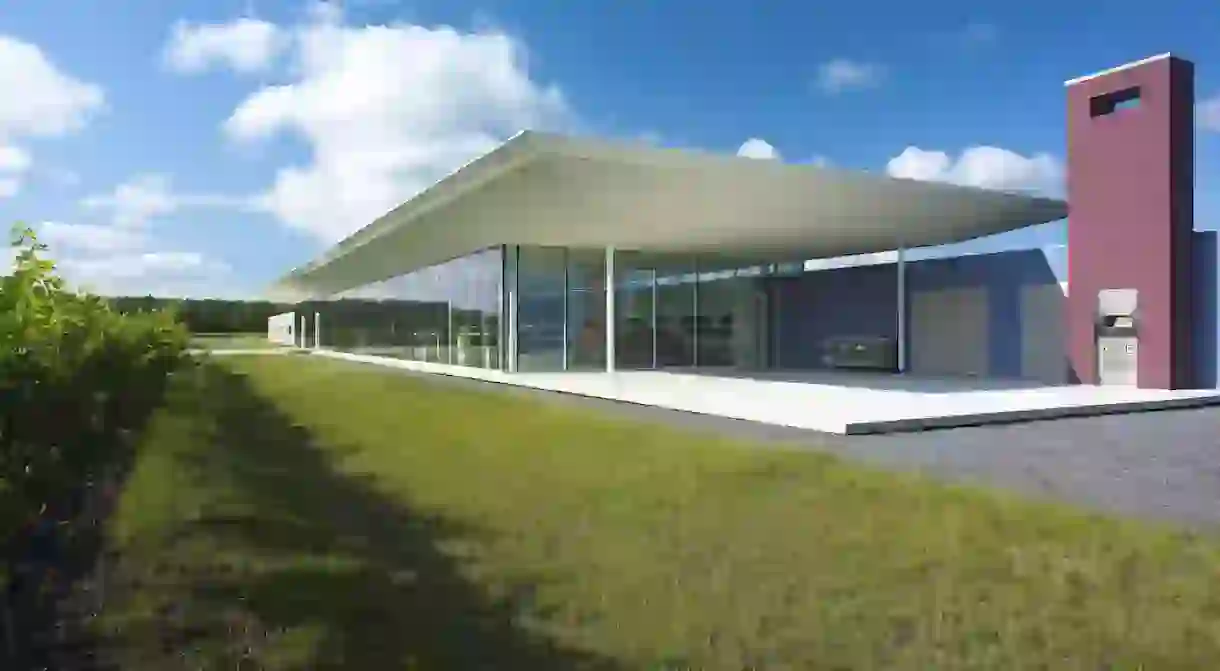Top 10 Wineries To Visit In Niagara, Canada

Whether you’re into supple Oregon pinot noir or stylish Spanish sparklers, it’s easy to fall back on international favorites when it comes to wine. These days, though, some of the best wines available in Ontario are grown in our own back yard. Head to Niagara to explore these ten spectacular wineries, and discover why it’s worth sipping local.
Coyote’s Run Estate Winery

There’s a secluded feeling about this small winery in St. David’s. It’s usually on the quieter side, which is great if you want to chat about the wines you’re tasting. And you should; Coyote’s Run offers one of the most accessible lessons in terroir, the concept that grapes reflect certain characteristics of where they’re grown. Among the wines on display, you’ll notice some labeled ‘Black Paw,’ and others, ‘Red Paw.’ These names reference two different types of clay soil. Taste the pinot noir from each vineyard from the same year to really understand what terroir is all about.
Stratus Vineyards
On the face of it, Stratus seems a little intimidating. Their tasting flights are priced above the regional average – probably because their wines are, too. The winery building looks like a millionaire oenophile’s penthouse loft; high ceilings, sunlight pouring in through full length windows, and tidy rows of wine housed by black and white bookcases. Even the heavy door might overawe. Despite first impressions, Stratus is one of the friendliest wineries in Niagara. Staff are chatty and down-to-earth, so stay a while and learn a bit about the region.
Southbrook Vineyards

It’s hard to leave Southbrook without learning something new about sustainability. They’re as passionate about green practices here as they are about wine – but what else would you expect from Canada’s first LEED Gold certified winery? Southbrook produces organic and biodynamic wines, which is why you’ll see sheep roaming among the vines, performing essential maintenance like weed control (and providing manure). If you’re partial to dessert wines, pick up a bottle of Framboise. The raspberry flavor is so rich and concentrated that, as one of their in-house wine lovers put it, you’ll imagine the seeds in your teeth.
Kacaba Vineyards
Anyone still skeptical about Ontario reds has a thing or two to learn about cool climate syrah, so head to the Twenty Mile Bench for a lesson from Kacaba. Since planting Ontario’s first syrah vines, this boutique winery has won a reputation for Rhône-style wines that taste more expensive than they are. Though some Kacaba wines are now available at the LCBO, most are not, so you really need to visit the source to taste what they have to offer.
Tawse Winery

Tawse is one of Ontario’s most celebrated wineries, and for good reason. Even with the enormous undertaking of six vineyards planted across three sub-appellations, Tawse has achieved organic and biodynamic certifications. The winery is still family-owned and operated, and like Southbrook, it’s home to grazing sheep. With so many award-winning varieties, it’s hard to narrow your tasting to just four samples. Highlights include their pinot noirs – the 2011 Growers Blend is a great example, with bright cherry notes and elegant spice on the nose – and their sparkling wines.
Cattail Creek Estate Winery
Winery
Cattail Creek’s shop and tasting bar are tucked beyond the beams and slatted awning of a charming green farmhouse; on a quiet day, you’d be forgiven for mistaking the entrance for a family home. Small, family-owned wineries like this one are exactly what make the Niagara wine scene so endearing. If you’re visiting during the warmer months, call ahead to book a picnic in the vineyard. Pair your selection of cheeses, meats and nibbles with a glass of chardonnay musqué, a food-friendly, full-bodied white with a kiss of citrus.
Pillitteri Estates Winery

Pillitteri has an international reputation for ice wine, and rightly so. If you’ve ever dismissed the stuff for being too sweet, it’s worth giving it another try here. Pillitteri has experimented with a huge number of ice wine varieties, and they’ve mastered the art of balance, which means you can sample a dessert wine that’s rich and round with satisfying acidity instead of cloying sweetness. Still not convinced? Try one of their cabernet francs; several have won accolades.
Ravine Vineyard Estate Winery
Over the past few years, Ravine has taken on a more lustrous quality. The vineyard’s restaurant still makes a rustic first impression, with outdoor tables scattered around the porch of a green clapboard farmhouse, but the menu is now a little less homespun and a little more upscale. The wines, though always excellent, seem to get better and better. You can taste for yourself in the shop; those who prefer white should opt for a chardonnay, while fans of red should sample the Redcoat, a blend of merlot, cabernet franc and cabernet sauvignon.
The Good Earth Winery
Whether you visit for lunch or spend a little longer at one of their fan-favorite cooking classes, plan on staying a while at Good Earth. The hospitality here is on another level – you’ll be greeted with such warmth, you may even feel like part of the family. Pick up a bottle of Betty’s Blend, a white wine comprising riesling, gewürztraminer and chardonnay. It’s a lovely summer treat that goes especially well with food.
Thirty Bench Wine Makers
It’s surreal to see the Toronto skyline from this lovely winery in Beamsville Bench. With its barn-style building and dirt-and-gravel road, it seems too quaint to be this close to the city. But when it comes to wine-making, there’s nothing provincial about Thirty Bench. They’re best known for their rieslings, and produce several small lot releases each year. It’s worth booking a personalized tasting to sample these and to hear more about what makes them unique.













